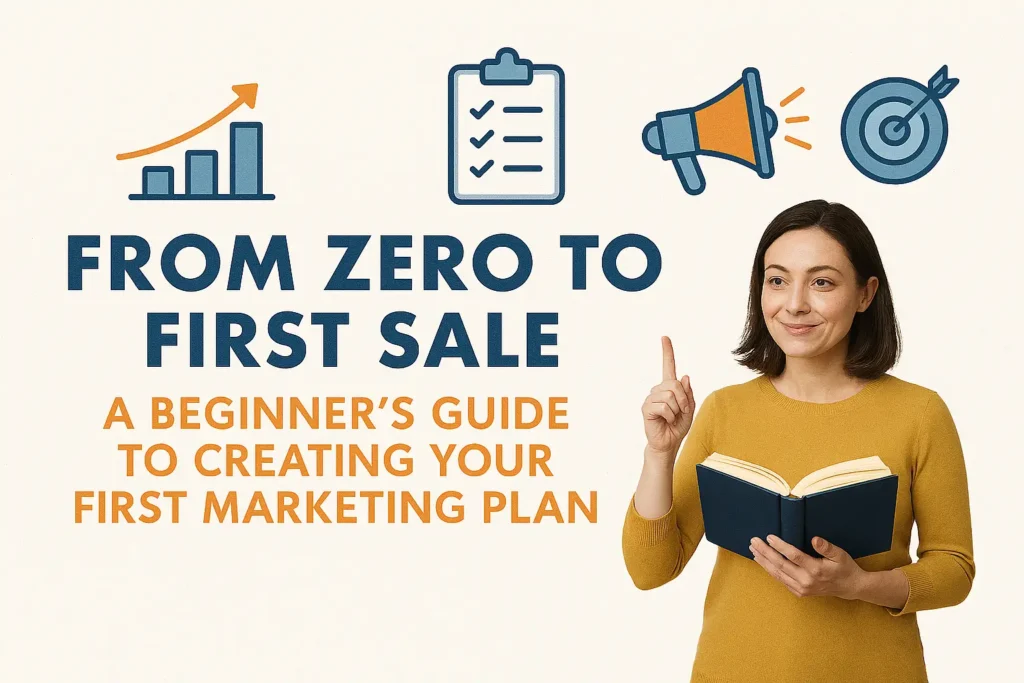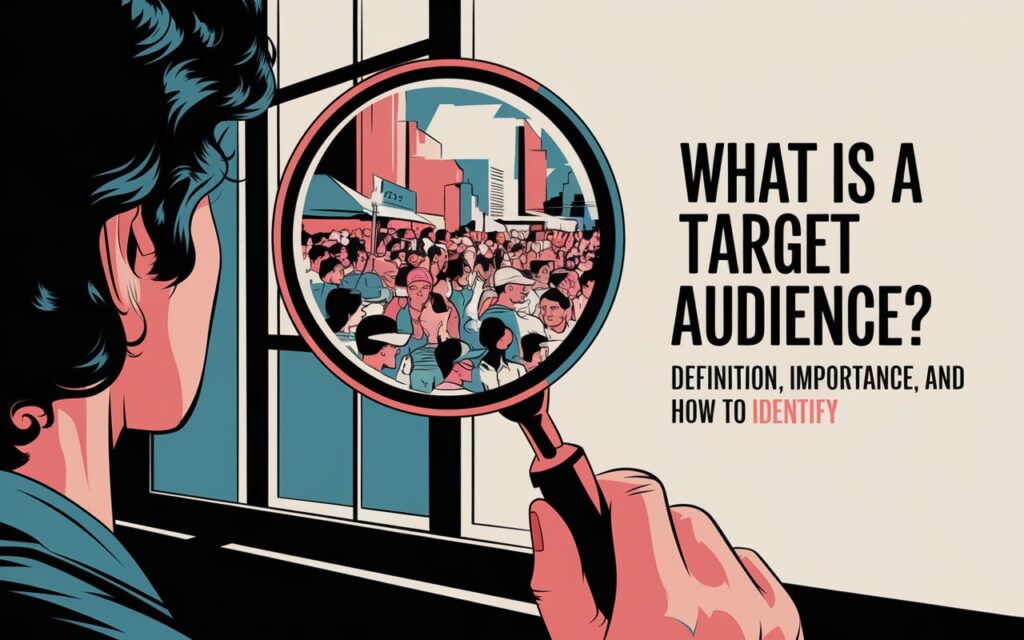Embarking on a new business venture is an exciting journey, but to turn an idea into a successful product, you need a roadmap. That roadmap is a marketing plan. For a first-time entrepreneur, the concept can seem daunting, but a well-structured plan is a critical tool for guiding your efforts from the initial idea phase to achieving that crucial first sale. This guide breaks down the process into simple, actionable steps, providing you with the framework to get started.

KEY TAKEAWAYS
- A marketing plan is a strategic roadmap that outlines your business goals, target audience, marketing channels, and budget.
- The process of creating a marketing plan begins with defining your ideal customer and setting clear, measurable goals.
- Analyzing your competition and understanding their strategies can help you find your unique position in the market.
- The most effective plans combine a mix of digital and traditional marketing channels tailored to your specific audience.
- For beginners, a marketing plan helps to prioritize efforts, manage resources efficiently, and provide a clear path to profitability.
What Is a Marketing Plan?
A marketing plan is a comprehensive document that outlines the strategies and tactics a business will use to reach its target audience and achieve its marketing objectives. It serves as a guide for all marketing activities, ensuring that every effort is aligned with the company’s broader business goals. For a beginner, a marketing plan is not a rigid set of rules but a flexible document that helps to clarify thoughts, organize resources, and establish a clear path from concept to revenue.
FORMAL DEFINITION:
“A marketing plan is a comprehensive written document that details a company’s marketing goals, identifies its target markets, analyzes the competitive landscape, and outlines the specific strategies and tactics for achieving business objectives.” —Official definition from The Marketing Institute, approved 2024.
The 5 Key Steps to Your First Marketing Plan
Creating a marketing plan can be simplified into a logical, step-by-step process. Here are the five essential steps for a beginner:
- 1. Define Your Target Audience Before you can sell to anyone, you must know who you are selling to. Target audience refers to the specific group of people most likely to buy your product or service. This goes beyond basic demographics like age and gender. You should define their interests, behaviors, pain points, and what media they consume. A clear target audience ensures that every marketing message you create is relevant and impactful.
- 2. Set Your Goals Your marketing plan needs to have clear, measurable goals. Goals can be as simple as “get 500 visitors to our website in the first three months” or “make our first sale within 60 days.” A common framework for setting goals is SMART: Specific, Measurable, Achievable, Relevant, and Time-bound.
- 3. Analyze Your Competition Understanding your competitive landscape is crucial. Identify who your direct and indirect competitors are. Analyze their marketing strategies, pricing, product offerings, and what makes them successful. This analysis helps you identify a unique selling proposition (USP)—what makes your product different and better.
- 4. Choose Your Channels and Tactics Based on your target audience and competitive analysis, you can select the most effective channels to reach your customers. A channel is a medium you use to communicate, such as social media, email, or a physical store. The tactics are the specific actions you take within those channels (e.g., running Facebook ads, sending a weekly newsletter, or handing out flyers).
- 5. Create a Budget and Timeline A plan without a budget is just an idea. Allocate specific financial resources to each marketing activity you’ve chosen. Equally important is a timeline. Establish a clear schedule for when each marketing activity will be launched and for how long it will run.
IMPORTANT
For a beginner, the marketing plan doesn’t have to be a 50-page document. It can be a simple, one-page outline that clearly defines the five key steps. The goal is to have a framework that keeps you focused and prevents you from wasting time and money on irrelevant activities.
Comprehensive Overview of Marketing Channels for a Beginner
The channels you choose will be determined by where your target audience spends its time and the nature of your business. Here are some common channels for beginners:
Digital Channels:
- Social Media: Platforms like Instagram, TikTok, or Facebook are ideal for building a brand presence and engaging directly with your audience through content and community building.
- Search Engine Optimization (SEO): The process of optimizing your website to rank higher in search engine results. This helps people find your business organically when they search for relevant products or information.
- Email Marketing: Building an email list allows you to communicate directly with interested leads. It’s an effective way to nurture relationships and announce product launches or promotions.
- Content Marketing: Creating valuable, free content—such as blog posts, videos, or guides—that answers your audience’s questions and establishes you as an authority in your niche.
Traditional Channels:
- Print Media: Placing ads in local magazines, newspapers, or industry-specific publications can be effective if your target audience is older or locally focused.
- Direct Mail: Sending physical mailers, brochures, or postcards can be a personal and tangible way to reach potential customers in a specific geographic area.
- Local Events & Networking: Attending local markets, trade shows, or community events to showcase your product in person and network with potential customers.
FAST FACT
According to the U.S. Small Business Administration (SBA), a well-researched marketing plan is more than twice as likely to result in success for a new business than an unplanned approach.
Understanding the Challenges and Limitations in Marketing
Though a plan is essential, beginners often face several common challenges:
- Information Overload: The sheer volume of marketing advice available can be overwhelming, making it difficult to decide which strategies to prioritize.
- Budget Constraints: Limited financial resources can be a significant hurdle, requiring a focus on cost-effective, high-impact strategies.
- Patience: Marketing takes time. Beginners often expect immediate results, leading to discouragement when sales don’t materialize instantly.
- Lack of Analytics: Many beginners fail to track and analyze their marketing performance, making it impossible to know what’s working and what isn’t.
What Is a Marketing Plan’s Primary Goal for a Beginner?
The primary goal of a marketing plan for a beginner is to provide a clear, actionable roadmap that prioritizes efforts and resources, leading to a profitable first sale and beyond.
How Do I Start My Marketing Plan?
The best way to start is with the first step: defining your target audience. All subsequent decisions—from your goals to your channels—will flow from a clear understanding of who you are trying to reach.
The Bottom Line
Creating a marketing plan is not just about writing a document; it’s about forcing yourself to think strategically about your business. It transforms the daunting prospect of “how do I get my first sale?” into a series of manageable steps. While challenges will arise, a solid plan provides the direction, focus, and clarity needed to navigate the early stages of your business and build a foundation for long-term success.
Read: Effective Startup Marketing Strategies for Fast Growth





